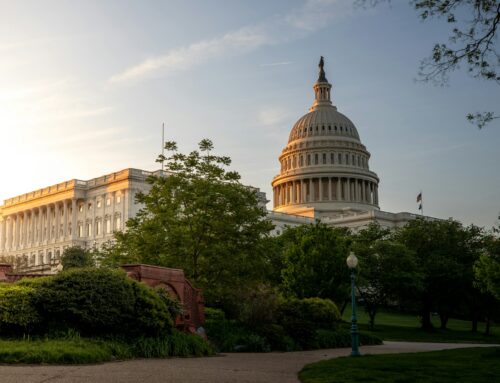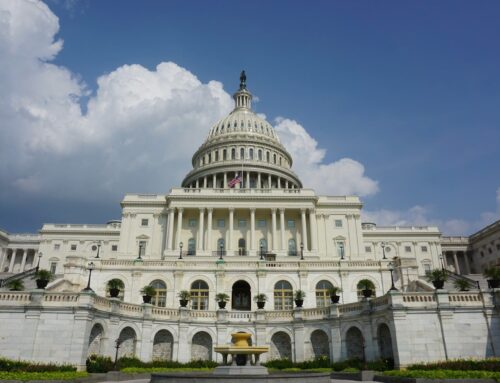Congress is always slow to get legislating the first year of a new President’s term.
But even by that measure the 115th is exceptional. And we don’t mean exceptionally good. There hasn’t been much accomplished on the legislative front and there is still a lot to get done in 2017.
What makes this inefficiency particularly remarkable is that not only does the country have a single party in power in the House, the Senate, and the Presidency, but Congressional leadership also decided to focus its efforts on using tools that allow for votes to pass by a simple majority in the Senate rather than the usual 60 votes required to overcome a filibuster. This Congress should have had a record-breaking pace of legislation.
The current status hasn’t been all the fault of Congress. The incoming Trump administration wanted to make their mark on the fiscal year 2017 spending bills, so instead of clearing the appropriations decks in December, Congress waited until they had all the power concentrated in one party to pass the final Omnibus spending bill in May, more than half way through the fiscal year. Even then, few of the president’s priorities were reflected in that Omnibus spending bill, and the delay put everything else behind, including the full Presidential Budget Request for FY2018 and the drafting of the budget and spending bills.
But the decision by Congressional leadership to get two bites at the budget reconciliation apple has been perhaps the most important factor in the Congress’ failure to keep a legislative calendar on track. Reconciliation, as many Wastebasket readers know, is a legislative mechanism that enables certain spending and revenue measures to pass the Senate with a simple majority, a convenient tool when the majority doesn’t have a filibuster-proof majority.
By not passing a budget resolution last year, Congress was able to pass a FY2017 budget resolution early this year to set up reconciliation to repeal and replace the Affordable Care Act (ACA, aka Obamacare). That process has been, to put it mildly, a challenging one. House leadership yanked an early version when it was clear it would fail and then squeaked revised American Health Care Act (AHCA) over the line before a revised budget score from the Congressional Budget Office was published. Since then, a group of Senate Republicans—not the whole conference—has been working in secret to develop an alternative bill to repeal and replace the ACA. Senate leadership released that bill today, and a CBO score is expected before a vote next week. The big question for Senate leadership is whether they can keep their party together to pass this through the Senate by a simple majority—or with 50 votes, and tie break vote from the Vice President.
The health care machinations don’t just put uncertainty into the health care markets. Time spent on that has also delayed the FY2018 Budget Resolution, which would set next year’s spending levels. This puts the Appropriations Committee in the bizarre spot of starting to move spending bills when they don’t know what they should all add up to. Purportedly the House budget resolution will emerge next week, but we’re not holding our breath. Getting all twelve spending bills done before the fiscal year starts is so daunting that Rep. Mike Simpson (R-ID)—chairman of an Appropriations Subcommittee—said they should just do a year-long continuing resolution to fund government at FY2017 levels throughout FY2018. And he made that suggestion last month. Another lawmaker is pushing the idea of passing an Omnibus package of all the spending bills before the August recess. That’s also startling—it’s not like it’s less work, and if it becomes loaded with a bunch of provisions unpalatable to the Senate, it may make getting a final bill harder. In turn, Congress is hoping to use the FY 2018 budget resolution as the engine for another reconciliation process: comprehensive tax reform.
Spending bills are not the only thing that need to be completed before the end of September. The fiscal gymnastics Treasury has been doing to not reach the debt ceiling will be exhausted by the fall, so Congress needs to move on that to avoid default. The authorization for the Federal Aviation Administration (FAA) and the National Flood Insurance Program (NFIP) both expire at the end of September. The National Defense Authorization Act needs to be adopted as well.
This would all move much more smoothly if leadership simply followed regular order and used the committee system, which would allow bipartisan input as legislation moves through the process. NFIP and FAA reauthorization have been going through hearing and committee votes. Both have their challenges ahead, but the best way to deal with that is to flush out the challenges and differences ahead of time and work through or even around them. Identifying differences and working towards workable compromises is the hallmark of the legislative process and what the constitution envisioned.
When Senate Majority Leader McConnell (R-KY) was Senate Minority Leader McConnell, he (rightly, we would say) decried the closed door machinations of the Democrats and one-party push on health care. But now he has done a complete about face and has operated in even greater secrecy than the Democrats did. (At least they held hearings!) The Senate absolutely deserves credit for releasing the bill this week, but offering congratulations for making major a legislative proposal public is damning with faint praise. Given what we know now, and the differences in the House and Senate proposals, repeal and replace has a difficult road forward—any movement to appeal to conservative Republicans risks losing moderate ones and vice-versa. And still, this effort to get something that looks good to one party, rather than barely acceptable to both parties, is sucking the legislative oxygen from the room.
There is still so much to be done. Even discharging the minimum appropriations responsibilities possible by passing a year-long continuing resolution, would require adjusting the budget caps envisioned by the Budget Control Act. Because the caps for FY2018 are less than what was agreed to for FY2017.
There’s still time to right the legislative ship and get a lot of this work done. But that would require working together. While it sometimes seems that regular order slows the legislative process down, it also results in durable results while shortcuts become long cuts and often end up being undone in short order.











Get Social